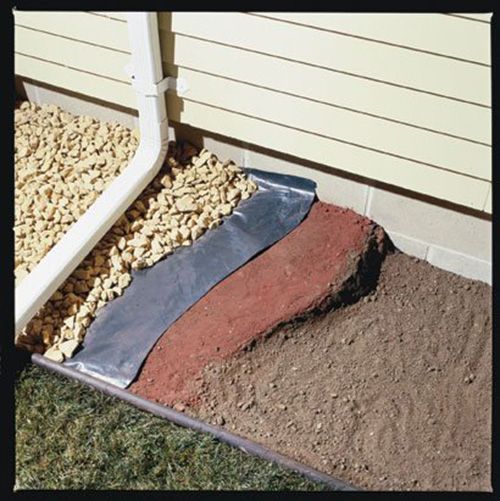How to Repair Soil Erosion Around Foundation
by siteadmin

If soil erosion is not addressed, it can lead to a shifting foundation. Heavy rains like those from the Pineapple Express can dump excessive moisture quickly causing soil damage and flooding.
There are many effective ways to repair soil erosion around your foundation and most of them are fairly simple. Read on to learn more about these strategies.
Plants
When you see erosion threatening the foundation of your home, it’s important to take action. If you allow soil erosion to chip away at your foundation, you’ll eventually have water and moisture issues inside the home.
The best way to prevent this type of damage is with proper drainage. You can put in French drains or a traditional gutter system that will direct ground and surface water at least 10 feet away from the house.
You can also plant a variety of grasses and low, spreading shrubs to protect the area from erosion. These plants have deep roots that help to cement the soil together, which is especially useful on slopes. You should also try to avoid bare areas around the foundation as much as possible. This can be a challenge in parts of the country that get very little rain, but it will protect your foundation. You can even use a retaining wall to control erosion on steep slopes.
Drainage
Whenever water seeps around your foundation, it can erode the soil and wash chunks of it away. It is a common cause of settling that can damage flooring, baseboards, and walls.
One way to stop this is by making sure that the soil around your foundation slopes downward and away from it. You can also add a garden or slanting swale to direct water to areas where it will be most useful rather than where it might damage your foundation.
Another option is to put in drains that take water from your gutters to a disposal area positioned at least five or 10 feet from your foundation. This will help to prevent erosion and moisture problems that can leave your basement exposed to the elements. In more extreme cases, retaining walls and other structural measures like rock drapes or piles of concrete holding compounds may be necessary. These are typically best left to a professional.
Soil Stabilizers
Getting soil stabilized is another way to prevent erosion that can damage the foundation of your home. Soil stabilization involves turning weak, moody soil into a strong, stable force that can hold weight and protect your foundation from water seepage and other problems.
There are several different ways to perform this process including chemical and mechanical methods. Chemical methods involve adding secondary materials that improve the soil. They can include cement, lime, fly ash and other additives that act as compaction aids and increase the shear strength of the soil. Biological stabilization includes afforestation and planting that help control erosion.
There are also a variety of mechanical methods that can be used to help with soil stabilization, including polyurethane foam injections. These injections can be performed underneath a building without the need to dig up and replace the existing soil. This is a quick and effective way to stabilize the soil. This method is also more environmentally friendly than traditional techniques.
Landscaping
The soil that surrounds a foundation is integral to supporting the house or building. If the soil is washed away, it can leave a house or building vulnerable to damage.
Thankfully, there are steps you can take to prevent or stop soil erosion around your foundation. The first is to mulch any flower beds near your home and to check the slope of the soil on a regular basis. It should be graded to funnel water away from the foundation.
Another step is to have a professional install surface or French drains to clear water pooling on the surface or seeping below ground level. Then, make sure to check your drainage system from gutter to spout regularly to ensure it is working properly. As the old saying goes, an ounce of prevention is worth a pound of cure. The above steps can help you avoid soil erosion problems that can lead to leaning foundation walls, shifting floors or bucking of foundations.
Visit Website
Click Here
www.sugarlandfoundationrepair.com
If soil erosion is not addressed, it can lead to a shifting foundation. Heavy rains like those from the Pineapple Express can dump excessive moisture quickly causing soil damage and flooding. There are many effective ways to repair soil erosion around your foundation and most of them are fairly simple. Read on to learn more…
Recent Posts
- Discover the Joy of Trained Goldendoodles with Warwick’s Goldendoodles
- The Benefits of Regular Lawn Care Maintenance for a Healthy and Attractive Lawn
- The Vital Role of Volunteerism and Community Engagement in Supporting Nonprofit Initiatives
- Essential Tips for First-Time Home Buyers in Dallas, Texas
- 2 Gen Realty LLC: Revolutionizing Commercial Real Estate Brokerage in Houston
